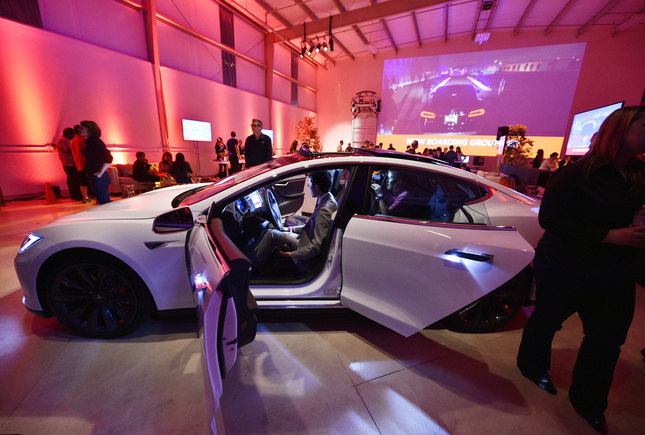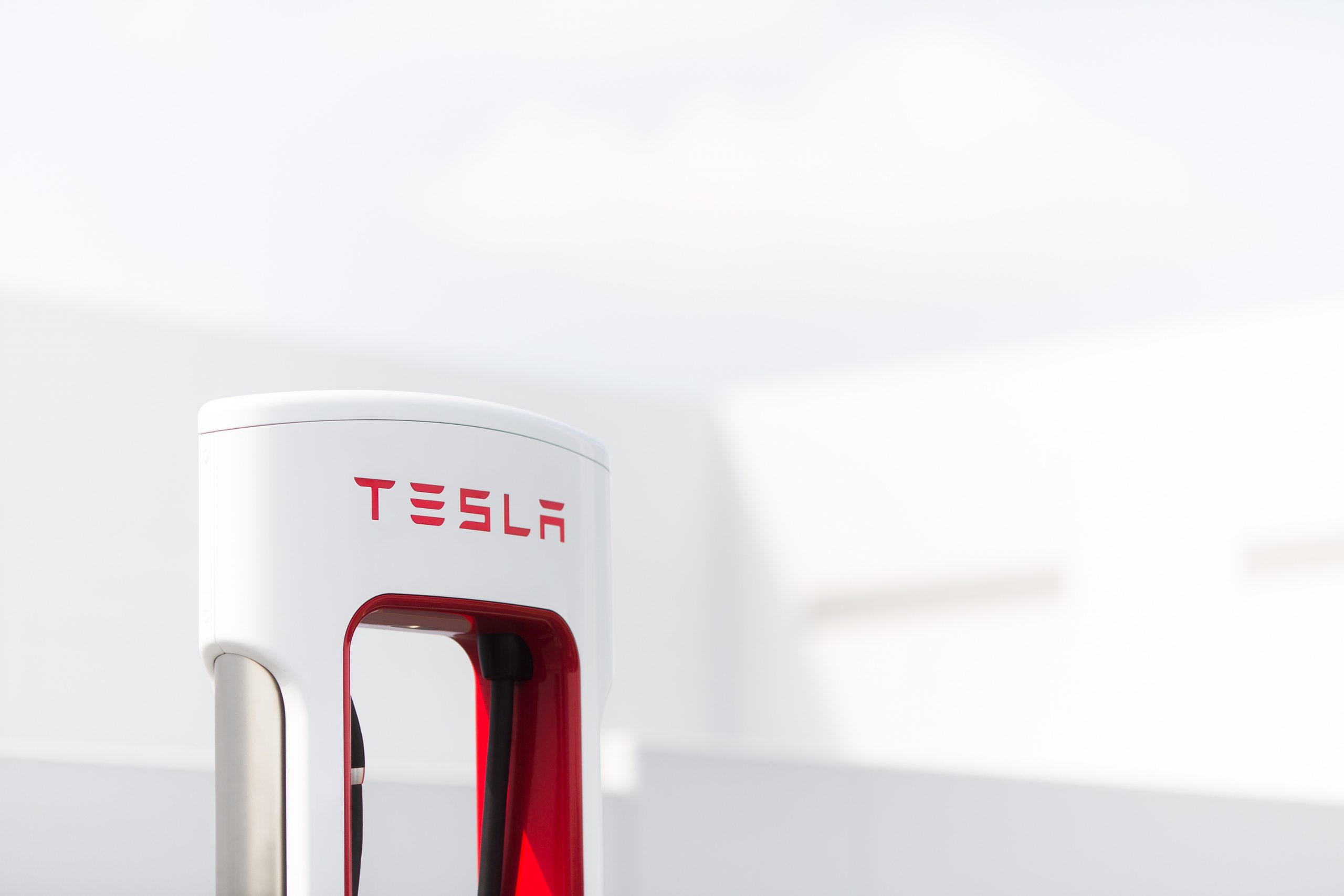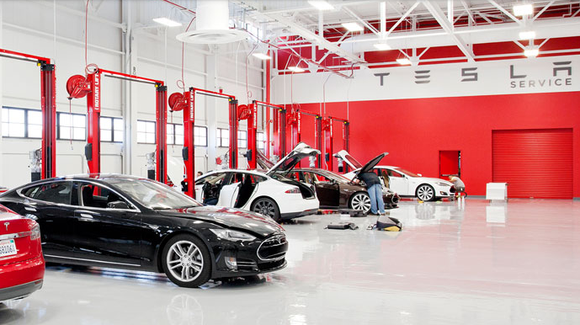News
How Tesla Challenges Other Car Makers
Tesla challenges other car makers to build better cars says Diarmuid O’Connell, Telsa’s vice president of business development at an industry conference.

Diarmuid O’Connell, Tesla’s VP of business development, had harsh words for competitors last week at the CAR management briefing seminars in Michigan. He told the group that Tesla challenges other car makers to build better cars.
“You can split the market of EVs into two programs,” he said. “Many are compliance programs. Exceptions are Nissan, ourselves and BMW. Most are focused on minimum compliance, lowest common denominator behavior, and the vehicles reflect that. In some respect, they are appliances, in terms of the way they look.”
CARB And The EPA
His remarks come at a time when two important regulatory programs are up for review. The California Air Resources Board is taking a look at its zero emissions vehicle policies and the Environmental Protection Agency is considering changes to its CAFE standards.
Traditional car makers are trying to get both agencies to relax those standards, but O’Connell says they should stop trying to “slow walk” the rate of progress toward a emissions free future and get busy building better cars. He says his company wants California and the EPA to raise their standards, not relax them.
“From an empirical standpoint, the [regulations] are very weak, eminently achievable and the only thing missing is the will to put compelling products on the road,” he said, according to The Wall Street Journal.
This week, Mary Nichols, CARB chairwoman since 2007, announced that she isn’t satisfied with having just a few electric cars on California roads. The current standard calls for 2.7% of all cars sold in California to be electric. Nichols wants to set the bar higher. In fact, she would like it if all the cars sold in California were electric by 2030.
For its part, the automotive industry is busy telling the EPA that the current CAFE standards are too high. Any further tightening would be bad for business. “We need consumers to buy them in high volumes to meet the steep climb in fuel economy standards ahead,” the Alliance of Automobile Manufacturers, an industry lobbying group, told the conference. The implication is that higher standards will kill the automotive business, cause massive layoffs, and have a negative impact on the economy.
This is precisely the same argument the automobile industry made about safety related changes in the ’50’s, seat belts in the 60’s, exhaust emission in the 70’s, airbags in the 90’s and better crash test performance at the beginning of the 21st century. Its complaints today are just more of the same.
CAFE Olay
The furor over EPA standards is actually a tempest in a teapot. On the surface of it, the 54.5 mpg requirement by 2025 seems like a huge increase above present day performance. But in reality, that standard is based on the old EPA mileage testing protocol, which was amended several years ago because it resulted in numbers that were wildly optimistic.
When the EPA adopted a new standard designed to better reflect real world expectations, it did not apply the new standard to the computation of the 2025 goal. If it did, that 54.5 mpg number would convert to around 37 mpg — which many of today’s cars are already capable of achieving.
To suggest that car companies cannot achieve a CAFE of 37 mpg using the current EPA protocol is patently absurd. In fact, a representative of Johnson Controls, one of the largest suppliers of components to the automobile manufacturing , said last year that car makers can easily meet the new standard and, in fact, many are already doing so today with internal combustion cars.
Charging Technology
One area where other manufacturers need to step up involves recharging technology for EVs and plug-in cars. At present, the best any of those other cars can handle is 50 kW. Tesla already has Superchargers with more than double that capacity. It’s new liquid cooled charging cables indicate the company has even higher power chargers in mind for the future.
O’Connell told the conference that drivers of competitors’ cars would be welcome to use the Supercharger network if only their cars were capable of handling the higher current. Tesla made its Supercharger patents public last year, but no other manufacturer has expressed any interest in them. Instead, the industry seems content to live with 50 kW “fast chargers” that really aren’t all that fast.
The Week In Review
Tesla has had a rough week. The stock market was disappointed with what Elon Musk had to say during the 2nd quarter conference call and punished the company’s stock, which closed down nearly 9% for the week.
The real question on people’s minds is whether Tesla will bring electric cars to the masses the way the Model T put the world on wheels almost a century ago, or whether it is a company that caters only to the wealthy and will flame out the way the Concorde SST did? If you are reading this, chances are we know how you would answer that question.

News
Tesla adds 15th automaker to Supercharger access in 2025

Tesla has added the 15th automaker to the growing list of companies whose EVs can utilize the Supercharger Network this year, as BMW is the latest company to gain access to the largest charging infrastructure in the world.
BMW became the 15th company in 2025 to gain Tesla Supercharger access, after the company confirmed to its EV owners that they could use any of the more than 25,000 Supercharging stalls in North America.
Welcome @BMW owners.
Download the Tesla app to charge → https://t.co/vnu0NHA7Ab
— Tesla Charging (@TeslaCharging) December 10, 2025
Newer BMW all-electric cars, like the i4, i5, i7, and iX, are able to utilize Tesla’s V3 and V4 Superchargers. These are the exact model years, via the BMW Blog:
- i4: 2022-2026 model years
- i5: 2024-2025 model years
- 2026 i5 (eDrive40 and xDrive40) after software update in Spring 2026
- i7: 2023-2026 model years
- iX: 2022-2025 model years
- 2026 iX (all versions) after software update in Spring 2026
With the expansion of the companies that gained access in 2025 to the Tesla Supercharger Network, a vast majority of non-Tesla EVs are able to use the charging stalls to gain range in their cars.
So far in 2025, Tesla has enabled Supercharger access to:
- Audi
- BMW
- Genesis
- Honda
- Hyundai
- Jaguar Land Rover
- Kia
- Lucid
- Mercedes-Benz
- Nissan
- Polestar
- Subaru
- Toyota
- Volkswagen
- Volvo
Drivers with BMW EVs who wish to charge at Tesla Superchargers must use an NACS-to-CCS1 adapter. In Q2 2026, BMW plans to release its official adapter, but there are third-party options available in the meantime.
They will also have to use the Tesla App to enable Supercharging access to determine rates and availability. It is a relatively seamless process.
News
Tesla adds new feature that will be great for crowded parking situations
This is the most recent iteration of the app and was priming owners for the slowly-released Holiday Update.

Tesla has added a new feature that will be great for crowded parking lots, congested parking garages, or other confusing times when you cannot seem to pinpoint where your car went.
Tesla has added a new Vehicle Locator feature to the Tesla App with App Update v4.51.5.
This is the most recent iteration of the app and was priming owners for the slowly-released Holiday Update.
While there are several new features, which we will reveal later in this article, perhaps one of the coolest is that of the Vehicle Locator, which will now point you in the direction of your car using a directional arrow on the home screen. This is similar to what Apple uses to find devices:
Interesting. The location arrow in the Tesla app now points to your car when you’re nearby. pic.twitter.com/b0yjmwwzxN
— Whole Mars Catalog (@wholemars) December 7, 2025
In real time, the arrow gives an accurate depiction of which direction you should walk in to find your car. This seems extremely helpful in large parking lots or unfamiliar shopping centers.
Getting to your car after a sporting event is an event all in itself; this feature will undoubtedly help with it:
The nice little touch that Tesla have put in the app – continuous tracking of your vehicle location relative to you.
There’s people reporting dizziness testing this.
To those I say… try spinning your phone instead. 😉 pic.twitter.com/BAYmJ3mzzD
— Some UK Tesla Guy (UnSupervised…) (@SomeUKTeslaGuy) December 8, 2025
Tesla’s previous app versions revealed the address at which you could locate your car, which was great if you parked on the street in a city setting. It was also possible to use the map within the app to locate your car.
However, this new feature gives a more definitive location for your car and helps with the navigation to it, instead of potentially walking randomly.
It also reveals the distance you are from your car, which is a big plus.
Along with this new addition, Tesla added Photobooth features, Dog Mode Live Activity, Custom Wraps and Tints for Colorizer, and Dashcam Clip details.
🚨 Tesla App v4.51.5 looks to be preparing for the Holiday Update pic.twitter.com/ztts8poV82
— TESLARATI (@Teslarati) December 8, 2025
All in all, this App update was pretty robust.
Elon Musk
Tesla CEO Elon Musk shades Waymo: ‘Never really had a chance’

Tesla CEO Elon Musk shaded Waymo in a post on X on Wednesday, stating the company “never really had a chance” and that it “will be obvious in hindsight.”
Tesla and Waymo are the two primary contributors to the self-driving efforts in the United States, with both operating driverless ride-hailing services in the country. Tesla does have a Safety Monitor present in its vehicles in Austin, Texas, and someone in the driver’s seat in its Bay Area operation.
Musk says the Austin operation will be completely void of any Safety Monitors by the end of the year.
🚨 Tesla vs. Waymo Geofence in Austin https://t.co/A6ffPtp5xv pic.twitter.com/mrnL0YNSn4
— TESLARATI (@Teslarati) December 10, 2025
With the two companies being the main members of the driverless movement in the U.S., there is certainly a rivalry. The two have sparred back and forth with their geofences, or service areas, in both Austin and the Bay Area.
While that is a metric for comparison now, ultimately, it will not matter in the coming years, as the two companies will likely operate in a similar fashion.
Waymo has geared its business toward larger cities, and Tesla has said that its self-driving efforts will expand to every single one of its vehicles in any location globally. This is where the true difference between the two lies, along with the fact that Tesla uses its own vehicles, while Waymo has several models in its lineup from different manufacturers.
The two also have different ideas on how to solve self-driving, as Tesla uses a vision-only approach. Waymo relies on several things, including LiDAR, which Musk once called “a fool’s errand.”
This is where Tesla sets itself apart from the competition, and Musk highlighted the company’s position against Waymo.
Jeff Dean, the Chief Scientist for Google DeepMind, said on X:
“I don’t think Tesla has anywhere near the volume of rider-only autonomous miles that Waymo has (96M for Waymo, as of today). The safety data is quite compelling for Waymo, as well.”
Musk replied:
“Waymo never really had a chance against Tesla. This will be obvious in hindsight.”
Waymo never really had a chance against Tesla. This will be obvious in hindsight.
— Elon Musk (@elonmusk) December 10, 2025
Tesla stands to have a much larger fleet of vehicles in the coming years if it chooses to activate Robotaxi services with all passenger vehicles. A simple Over-the-Air update will activate this capability, while Waymo would likely be confined to the vehicles it commissions as Robotaxis.









